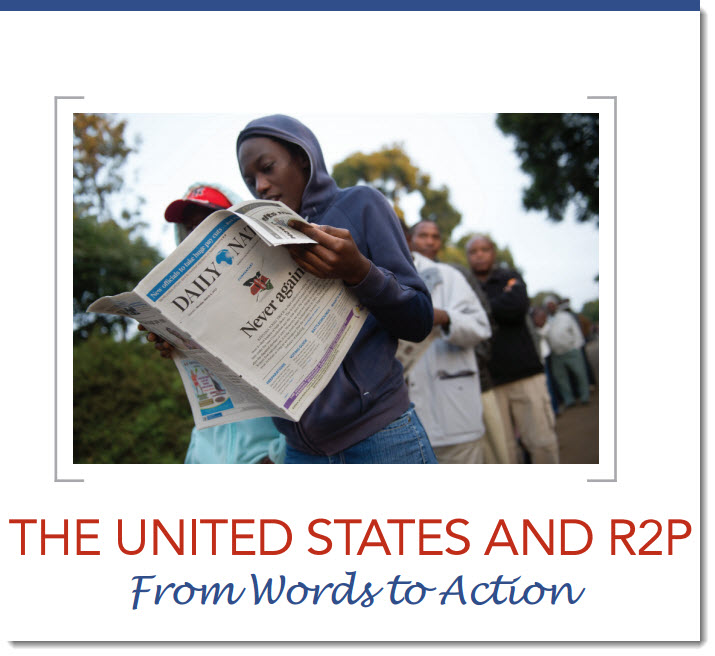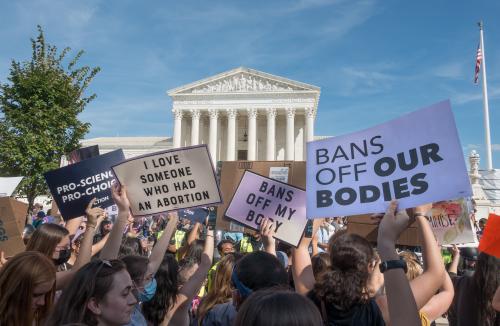Rebel forces in the Democratic Republic of the Congo have executed and raped scores of women and children in the last few months. In Syria, as a result of the civil war, the UN says an average of 6,000 people per day are fleeing their homes, the worst refugee crisis in 20 years. South Sudan’s army has been accused of human rights violations as it wages a counter-insurgency campaign.
What responsibility do countries have to protect civilians from such human rights violations, and, indeed, what right does any country (or countries) have to intervene across another’s borders to protect rights? In 2005, world leaders unanimously affirmed the “Responsibility to Protect” (R2P), a set of principles designed to protect civilians from genocide, war crimes, ethnic cleansing and crimes against humanity and to provide norms to guide answers to these questions.
 In a new report, “The United States and R2P: From Words to Action,” co-authors Madeleine Albright, former U.S. secretary of state, and Richard Williamson, a Brookings nonresident scholar and former special envoy to Sudan, review implementation of the R2P norms and recommend a number of steps to strengthen them, including specific steps the U.S. government should take to provide global leadership. Despite universal agreement on the principles, they find significant problems in their realization:
In a new report, “The United States and R2P: From Words to Action,” co-authors Madeleine Albright, former U.S. secretary of state, and Richard Williamson, a Brookings nonresident scholar and former special envoy to Sudan, review implementation of the R2P norms and recommend a number of steps to strengthen them, including specific steps the U.S. government should take to provide global leadership. Despite universal agreement on the principles, they find significant problems in their realization:
But all too often, the promise of R2P has been more noteworthy in its breach than in the honoring of our commitments. Despite the lofty ambitions of its framers, the crimes R2P was intended to prevent have continued at a shocking pace in the last few years, not only in Syria but also in such diverse places as Sri Lanka, Kyrgyzstan, the DRC, and Sudan.
The report represents the larger efforts of a working group jointly convened by Brookings, The United States Holocaust Memorial Museum, and the U.S. Institute of Peace. The leaders of these three organizations explain that the continuing threat of genocide and other forms of mass atrocity make this an appropriate time to revisit R2P. “Over the past eight years,” they write:
… R2P has become part of the international vocabulary in discussing genocide, war crimes, ethnic cleansing, and crimes against humanity. But in the United States, the concept is little known and frequently misunderstood. Therefore, we thought it useful to ask the working group to help to explain this concept to the American public, assess its application in specific cases, acknowledge obstacles and limitations to its implementation, and suggest how the United States might play a constructive—indeed, leadership—role in advancing the goals of R2P.
The report’s summary recommendations are:
-
- In major speeches before national and international audiences, the president and other senior U.S. officials should articulate a clear vision of U.S. support for all three pillars of R2P—and should not shy away from using the phrase.
-
- The U.S. government should consider any credible early warning of mass atrocities anywhere in the world to require an immediate high-level policy review to identify alternatives and take steps to reduce the likelihood of catastrophe.
-
- The U.S. government should launch a diplomatic initiative with the UN Secretariat and like-minded nations to strengthen the global capacity to prevent the atrocities covered by R2P.
-
- Executive branch departments of the U.S. government should engage relevant congressional committees and their leading members on more effective R2P implementation. Congress in turn should hold regular hearings on the administration’s atrocity prevention efforts and ensure that the administration has plans in place for countries considered to have the greatest risk of mass atrocities in the future.
-
- The U.S. government should strive to improve the effectiveness of the International Criminal Court as a means of deterring and prosecuting war crimes and, where appropriate, expand its policy of positive engagement with the court.
-
- Congress should approve full funding for international crisis prevention and stabilization measures, including development assistance, pro-democratic programs, UN peacekeeping, other relevant UN activities, and support for training and equipping the emergency response forces of regional organizations.
-
- The U.S. government should launch a comprehensive study of the extent to which modern technologies can be used to support the purposes of R2P. The goal should be to develop public-private partnerships to better use emerging technologies to predict, prevent, and respond to threats of mass atrocities.
-
- The U.S. government should take steps to make permanent the Atrocities Prevention Board and other reforms designed to increase its capacity to prevent genocide and other war atrocities.



Commentary
What Is the “Responsibility to Protect”?
July 24, 2013